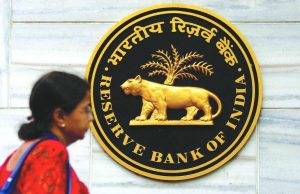IAS officers attend an address by Prime Minister Modi. Photo: PIB
Moves by the government to dilute this prestigious service by inviting applications for joint secretary-level posts at the centre are fraught with risks and could weaken this institution
~By MG Devasahayam
In the last four years of the NDA government, like many institutions and instruments of democratic governance, the Indian Administrative Service (IAS) has been under assault. First came the steep reduction in their role at the decision-making level of joint secretaries in central government departments and replacing them with personnel from other services that have no all-India character or exposure.
Disturbingly, IAS joint secretaries have been seeking premature repatriation to their respective state cadres and very few empanelled IAS officers are coming on deputation to the centre.
Then came the proposal to trash the merit list for civil services recommended by the constitutionally-mandated UPSC and instead, allotting service as well as cadre based on the trainee’s performance at the Lal Bahadur Shastri National Academy of Administration in Mussoorie during the Short Foundation Course. Even before the ink dried on this, we have “lateral entry” for which the government invited applications from “outstanding individuals”, including from the private sector, for appointment to 10 joint secretary-level posts at the centre, which could multiply in future.
With all its flaws and failings, the IAS has thus far kept the faith of the founding fathers of our Republic in keeping together a subcontinent of 1.3 billion people comprising 4,635 multi-religious communities who speak 179 languages and 550 dialects. What keeps the country together is its Constitution which is India’s Charter of Governance and the IAS is an instrument created by this very statute. Being an All India Service (AIS), it is a bridge between the centre and the states, with knowledge and expertise flowing both ways.
Sardar Patel did not achieve the unity of the country out of the blue. He worked hard for it from different dimensions. He was convinced that only a seasoned and committed bulwark that has its spread from the remote villages to the corridors of Delhi can carry out this difficult agenda post-Independence. AIS (IAS and IPS) fitted the bill and they were covenanted in the Constitution itself (Article 312) despite resistance from chief ministers and the Constituent Assembly.

The task was arduous and the crisis in the IAS started in the early sixties when “development” replaced “revenue” as the major goal of the administration, with development posts enjoying high prestige. At that time, India’s civil service system was widely seen as one of its assets.
However, its hierarchical layering and IAS officials’ lack of in-depth knowledge in various developmental fields became major constraints. Jobs in a whole range of new industrial and commercial activities which a state was expanding into were also highly specialised and equally demanding of expertise. Though not qualified, IAS officials got themselves positioned in these posts. With the new jobs seducing upwardly mobile IAS officials, basic governance got neglected.
Globalisation and economic reforms in the nineties brought in further change in the IAS. The FDI-GDP model of development became a mania. “Facilitating” the amir aadmi who came with millions and billions became a higher priority for an IAS official in the reform era than basic governance so that the aam aadmi lived a life of honour and dignity. These conflicting agendas led to the IAS acquiring a split face.
This led to conflicts between the so called “corporate” and “non-corporate” bureaucrats within the IAS and elements of “spoils system” crept in. Such conflicts resulted in basic governance getting skewed, leading to serious inequity and injustice to the disadvantaged. This, coupled with the absence of sound political leadership across the board, considerably weakened the service.
Norms not followed in RBI selection?
 The selection process of a deputy governor of the Reserve Bank of India (RBI) is a rigorous one if followed strictly. The selection of the candidate for the second-highest banking post in the country is decided by the Appointments Committee of the Cabinet (ACC) headed by PM Modi. On June 4, the ACC named IDBI MD and CEO Mahesh Kumar Jain as the fourth deputy governor with a three-year term. This post was lying vacant for ten months. As per the RBI Act, there should be four deputy governors—two from the Bank itself; one, a commercial banker and the last, an economist.
The selection process of a deputy governor of the Reserve Bank of India (RBI) is a rigorous one if followed strictly. The selection of the candidate for the second-highest banking post in the country is decided by the Appointments Committee of the Cabinet (ACC) headed by PM Modi. On June 4, the ACC named IDBI MD and CEO Mahesh Kumar Jain as the fourth deputy governor with a three-year term. This post was lying vacant for ten months. As per the RBI Act, there should be four deputy governors—two from the Bank itself; one, a commercial banker and the last, an economist.
Incidentally, while a search panel headed by the cabinet secretary, and which included RBI Governor Urjit Patel, had conducted interviews (of three senior bureaucrats) on May 10, this process excluded the outcome of an earlier interview (on July 29 last year) and the entire exercise was done afresh. Not only has this change remained unexplained, it is also being said that Jain barely went through the interview process. However, this does not reflect his capability, which is proved beyond doubt. The three bureaucrats interviewed in May do not figure as appointees. This is against the norms. The reasons for the inordinate delay and why the old selection (of July last year) was dumped and a fresh one initiated are not known.
The other deputy governors are Viral V Acharya, NS Vishwanathan and BP Kanungo.
Even so, the IAS is a permanent civil service and must remain so. It must also go through fundamental and holistic reconfiguring to transform itself into a vibrant, professional management cadre so that the unimaginative, acquiescing and egocentric civil servant can become an imaginative, un-acquiescing and result-oriented manager. To make this happen, IAS reformers should become iconoclastic, take the bull by the horns and demolish pet theories, myths and mindsets that have crippled the dynamism of the service.
First and foremost is the “bureaucratic gagging”—“a civil servant should only be seen, not heard”. Under this anachronistic arrangement, some of India’s best minds that constitute the IAS are being throttled and wasted as mere status quo time-servers who can’t even openly speak against rotten corruption and creeping authoritarianism.
Second, the notion of “subservience to political masters” envisages a meek and “abdicating” role for IAS officials and therefore, is self-defeating. If they strictly observe “political subservience” and surrender to the rulers-of-the-day who represent only about a quarter of the population and do their bidding without demur, where will the majority flee?
Third, too much of protection can reduce a person to cowardice. This is what is happening to many IAS officials—they willingly become cowards and do not have the courage to face even minor inconveniences for upholding honesty and integrity in governance. They compromise and acquiesce every time just to keep their posts and positions safe.
Fourth, the practice of “Jack-of-all-trades”, fitting round pegs in square holes and square pegs in round holes is the villain of professionalism and probity in civil service. This feudal practice enables politicians to play favourites and post anybody for any job, the main criteria being their pliability!
Prime Minister Narendra Modi rode into power with the clarion call of “Minimum Government and Maximum Governance”. The best way to achieve this was to dismantle the archaic hangovers and make the IAS—now bestowed with a number of doctors as well as IIM and IIT graduates—a thoroughly professional entity capable of delivering the “development” goals while keeping the country united.
For this, the PMO should have assumed a leadership position, declared an administrative crisis, rallied the Legislature and Executive and come out with a comprehensive reform/reconfiguration blueprint so that the IAS could become the bulwark of “Governance for Development and Unity”, which is badly lacking today.
Instead, the PMO has been doing the opposite and has now brought in the spoils system to dismember it by sabotaging the UPSC. This seems to be part of a plan to have a parallel “private service” within the government. The spoils system, also called the “patronage system”, is an arrangement that employed and promoted civil servants who were friends and supporters of the political group or person in power. In a parliamentary democracy, wherein the government is run by permanent civil servants, this is unacceptable.
Protagonists of the lateral entry, however, compare this to appointments in the past to senior positions in the government from outside the IAS. These include Dr Manmohan Singh, Montek Singh Ahluwalia, V Krishnamurthy, Lovraj Kumar, Rakesh Mohan, Vijay Kelkar, Sam Pitroda, etc. This is untenable because these are isolated, individual cases and the present one is a structured introduction of a system of sharing the spoils. Already, there is talk that all 10 appointments have been pre-fixed, representing favourite corporate interests.
Prime Minister Zulfikar Ali Bhutto had introduced this system in Pakistan to induct sons and daughters of his party supporters in senior government positions. It was a huge disaster as it promoted incompetency, inefficiency and corruption, resulting in its scrapping by President Zia-ul-Haq. Is India adopting a discredited scheme of Pakistan, which we call a “failed state”?
By dismembering the IAS, India’s governance could fall between two stools–permanent civil service and the spoils system. This could endanger the unity and integrity of the country.
—The writer was administrator, Chandigarh Capital Project, and chief administrator, HUDA



